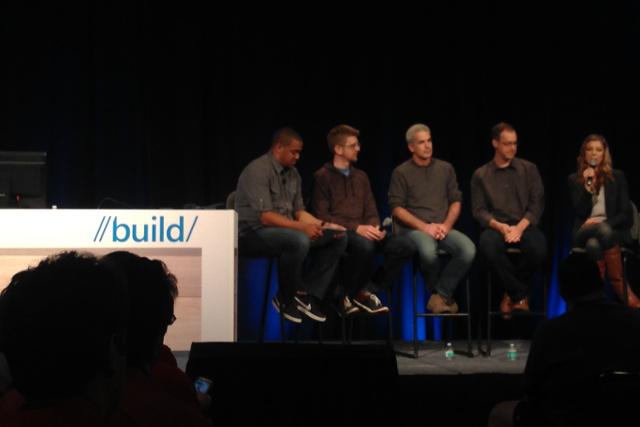
The panel included four stars of their respective geek fiefdoms — Jeff Norris, OnSight program manager at NASA’s Jet Propulsion laboratory; Almagor Aviad, senior product manager at Trimble; Mark Griswold, a professor and researcher specializing in medical imaging; and Megan Saunders, studio manager at Skype.
Discussion began with the general difficulty of designing for an entirely new device. Jeff Norris noted that HoloLens forces developers to “train our intuition in a completely new medium,” which provides a lot of creative opportunity, but also forces experimentation. Both he and Megan Saunders noted that, particularly for the early third-party developers invited to partner with Microsoft (the SDK is not public yet), there are no rules, no style guide, no established user interface. Some of that may be worked out by the time the device is opened up to all developers, but there’s certainly going to be a learning curve.
On the other hand, though, all four developers seemed to find the technical nitty-gritty of coding for holograms surprisingly straightforward. Mark Griswold, who admitted he no longer did much programming himself, described designing for the device as “almost drag and drop.” After reviewing the documentation, he had created his first hologram within five minutes. The developers also mentioned that the way HoloLens works as part of the Windows ecosystem makes building applications, and running them alongside content on a traditional PC, relatively simple.
From there, the panel switched to talking about collaboration. Saunders seemed to come very close to leaking information from a planned demo, but managed not to spill the beans, though she did mention that a new collaborative, view-sharing demo (powered by Skype, no doubt) is in the works. Aviad Almagor said his company, Trimble, which powered the demo I saw in my HoloLens hands-on, is looking to build collaborative tools that let people wearing the device see the location, orientation and gaze of other users.
For Jeff Norris, of NASA, this kind of collaboration is particularly exciting. His OnSight program transports people to the surface of Mars, a place humans currently can’t visit. The ability to work with other researchers in real time to explore and discover the surface of a distant planet could be revolutionary for the organization.
Saunders, the only person on the developer panel who works for Microsoft, ended discussion by teasing that the SDK is still in the works, with availability to be announced. When it will arrive is hard to say, but when it does, it’ll be available through the Windows Insider program.
Editors' Recommendations
- Turns out Microsoft’s HoloLens 3 might not be dead after all
- Hands-on with Microsoft Mesh: I handed someone a whale shark, and it was awesome
- Build 2020: What to expect from Microsoft’s online-only developer conference
- Microsoft’s futuristic HoloLens 2 headset is now shipping, starting at $3,500
- Microsoft sends developers a very early save the date for Build 2020


